With recent polling indicating that Texas might be closer in 2020 than in 2016, and demographics in the state trending favorably towards the Democrats, it seems that the Republicans’ largest bank of Electoral College votes might be vulnerable. The question then looms, if Texas turns blue (and stays blue) in the next decade, how can Republicans expect to win elections? Let’s look at some of the strategies that the GOP might consider if Texas no longer sits in the Republican column.
For starters, a reminder of how the actual results looked in 2016.
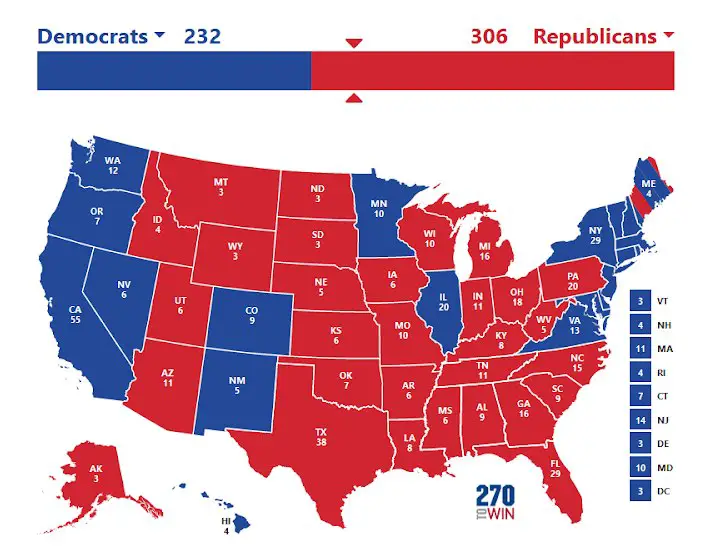
And this is how the results would have looked in 2016 if Hillary Clinton had won Texas.
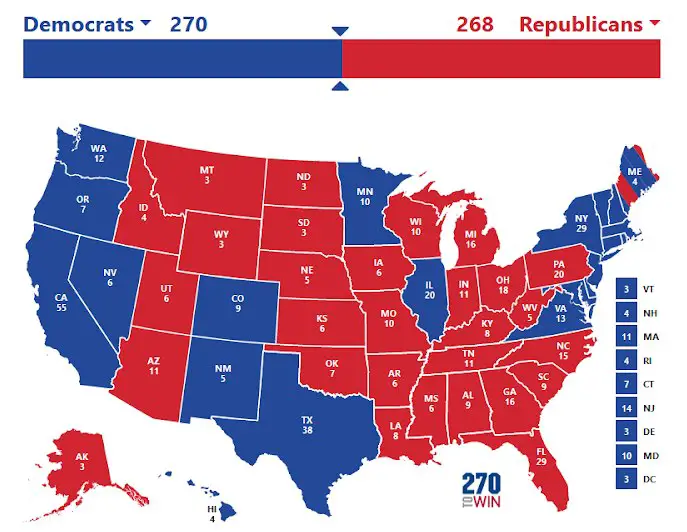
The important thing to note here is that just by switching Texas, the Democrats would have won in 2016. Granted, the margin is the smallest a candidate could win by (without invoking the complications of a 269-269 Electoral College tie), but the point stands, a win for the Democrats in Texas in 2016 would have seen a President Clinton rather than a President Trump. Even by breaking through the North-Eastern blue wall by winning Pennsylvania, Wisconsin, and Michigan, Trump would still have been short of enough Electoral College votes to win the election. Add in the fact that Trump won all of the states that are battleground states in 2020 (Ohio, Florida, Iowa, Arizona North Carolina, and Georgia), and the situation looks dire for Republicans minus Texas.
To see how bad things could look, here’s how 2020 could look in a worst-case scenario for Republicans, should Democrats win all of the aforementioned swing states and Texas.
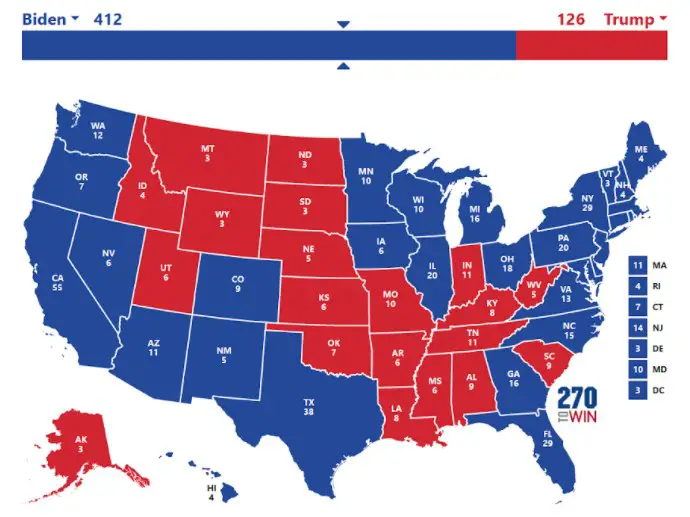
Granted, this is an extreme (although plausible) outcome for the 2020 election. Instead, let’s look at how 270towin rates the race currently, including unassigned battleground states, but switching Texas from lean Republican to lean Democrat.
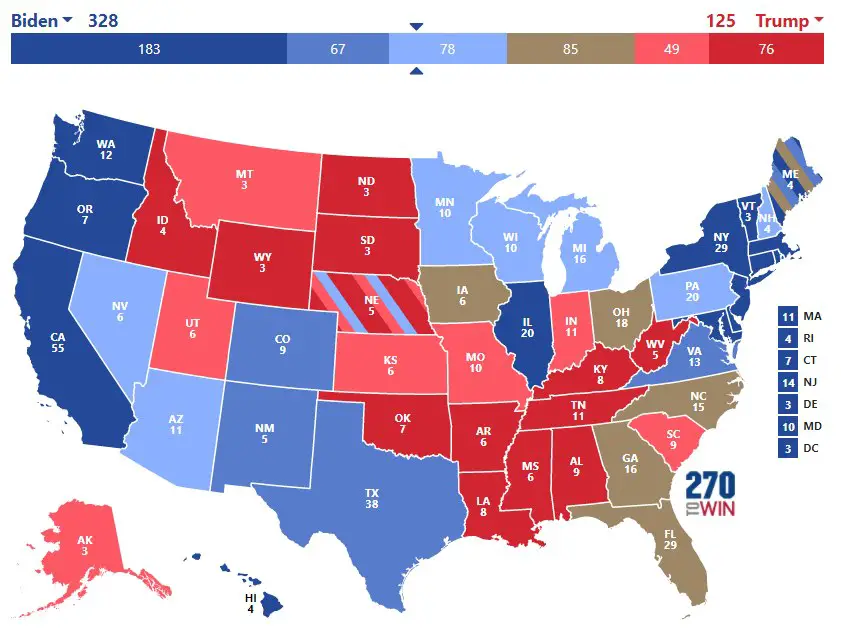
Even with the unassigned battleground states, the election is already a done thing for Joe Biden and the Democrats (actually even without Texas flipping, Democrats have already won according to this map). Of course, 270towin relies exclusively on polling and doesn’t really consider demographics, but even without demographics, pollsters have made significant changes since 2016 to reflect the fact that they got that election “wrong”, although the extent to which they were truly wrong is up for debate.
The point I’m trying to demonstrate is simple. If Republicans lose Texas, it becomes incredibly difficult for them to win a general election outright. As Trump’s map from 2016 shows, what was an extremely good election for Republicans can be undone without Texas.
So how can Republicans win without Texas?
Let’s take the 2016 map with Texas flipped as a starting point. Republicans were at 268 Electoral College votes, meaning that they would only need to flip one Democratic state to win the election. The simplest way to do that would be to target states like Minnesota (MN), the only midwestern state the Republicans failed to pick up in 2016, minus solid blue Illinois. Let’s flip Minnesota and see how the map looks then.
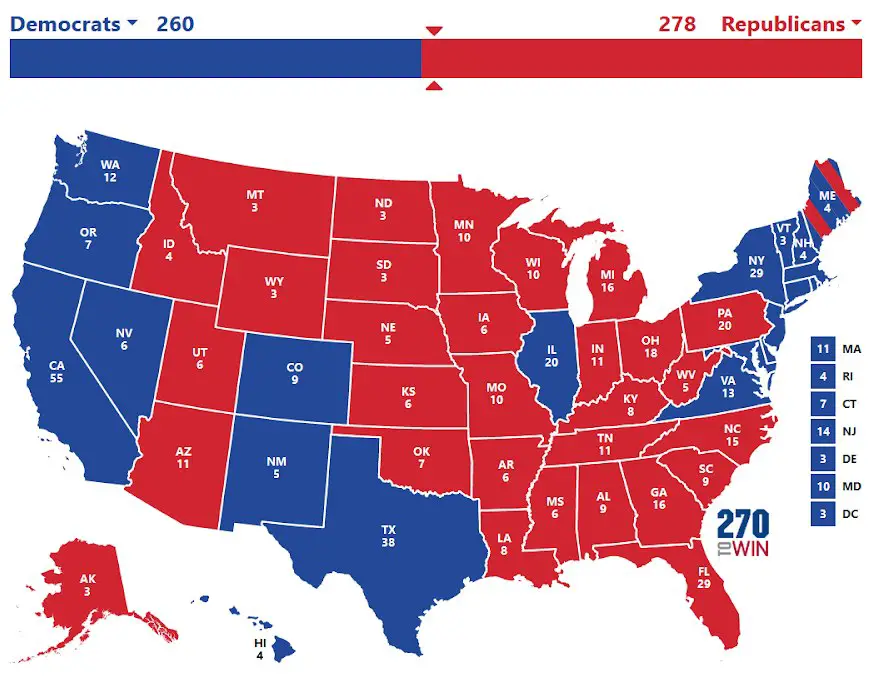
This is one way in which Republicans can win an election without Texas. The ten extra Electoral College votes from Minnesota push the Republicans to a victory, albeit by a small margin – but a victory nonetheless. Of course, this begs the question, how realistic is this map? Well, Minnesota was by no means a comfortable victory for the Democrats in 2016; Clinton won the state by just one-and-a-half points or roughly 44,000 votes out of a total of 2.7 million votes cast. It’s not unrealistic to think that, with some extra effort in campaigning, Republicans could flip the North Star State.
Republicans could also target Nevada (NV), which was ranked as a lean-Democrat/battleground state in 2016. Clinton eventually won Nevada and its six Electoral College votes, but only by a margin of around 30,000 (or 2.4%) from just over a million cast. Here’s how that map would look.
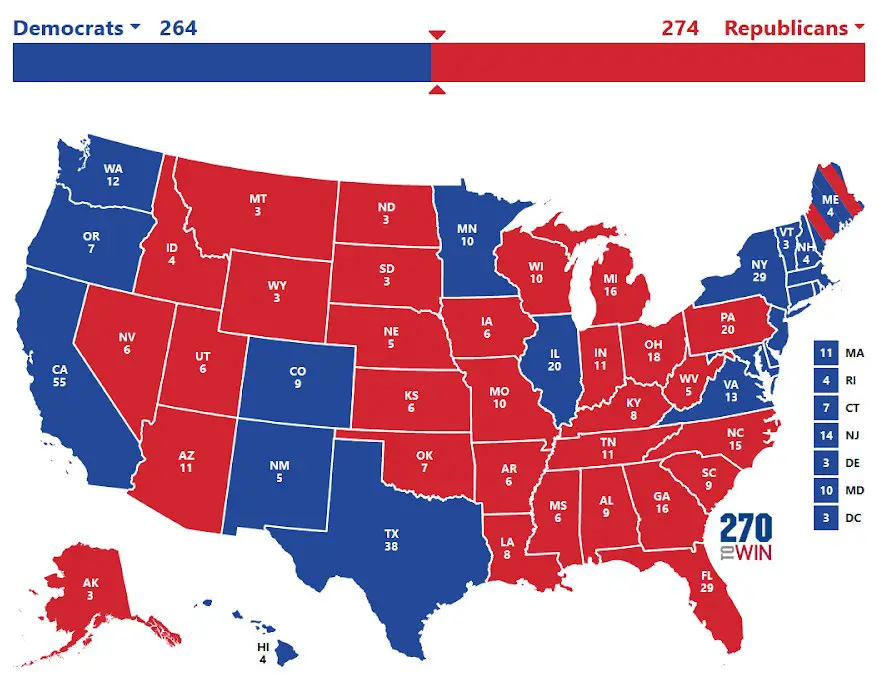
A smaller margin than if the Republicans flipped Minnesota, but a victory nonetheless.
Aside from Nevada and Minnesota, there very few paths for the Republicans to win without Texas. And these maps that we have considered rely on the Republicans keeping hold of all the states they won in 2016. Polling suggests that Biden is set to recapture at least a handful of the swing states that the Democrats lost in 2016. If Republicans are struggling to keep hold of Texas and Florida, they are in serious trouble.
A few years ago, the American public would have laughed at you if you told them that Texas might flip to the Democrats. However, with that option very much on the table in 2020, and even more likely in 2024, GOP strategists will certainly be worried about the path the party takes in future elections. A Republican victory without Texas is almost impossible. Either the Republicans get serious about keeping hold of Texas, or they divert energy and attention elsewhere, and quickly.
All maps courtesy of 270towin.com
Donate Now to Support Election Central
- Help defend independent journalism
- Directly support this website and our efforts
